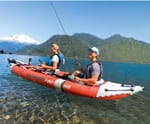Navigating with a compass is a skill that can open up a world of adventure and provide peace of mind when you're exploring the great outdoors.
Learning to use a compass is a fundamental skill for any outdoor enthusiast. With a reliable compass, mastering the basics can turn you from a novice into a confident navigator.
Remember, the key to mastering compass navigation is practice, practice, practice!
Let's walk through the beginner steps to learn how to use a compass effectively.
Understanding Your Compass
It's important to familiarize yourself with the parts of your compass.
For the purposes of this guide, we are using an advanced navigational compass to demonstrate the beginner steps to start navigating like a pro.
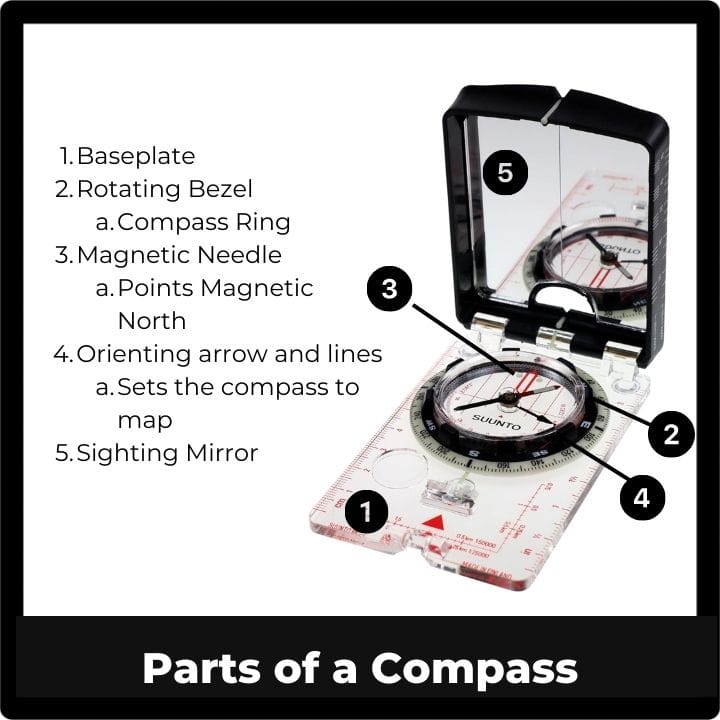
Start by getting familiar with the parts of the compass:
- The baseplate is the body of the compass.
- The rotating bezel or compass ring is marked with degrees and cardinal points.
- The magnetic needle points towards magnetic north.
- The orienting arrow and lines are used to set the map to the compass.
- The sighting mirror helps in taking precise bearings.
Setting Declination
Declination is the difference between magnetic north and true north. It varies depending on where you are on the globe.
- Find the local declination for your area (available on most topographic maps or online).
- Use the declination adjustment on a compass like the SUUNTO MC-2 to set the correct angle. This ensures your bearings correlate with true north on your map.
Taking a Bearing from a Map
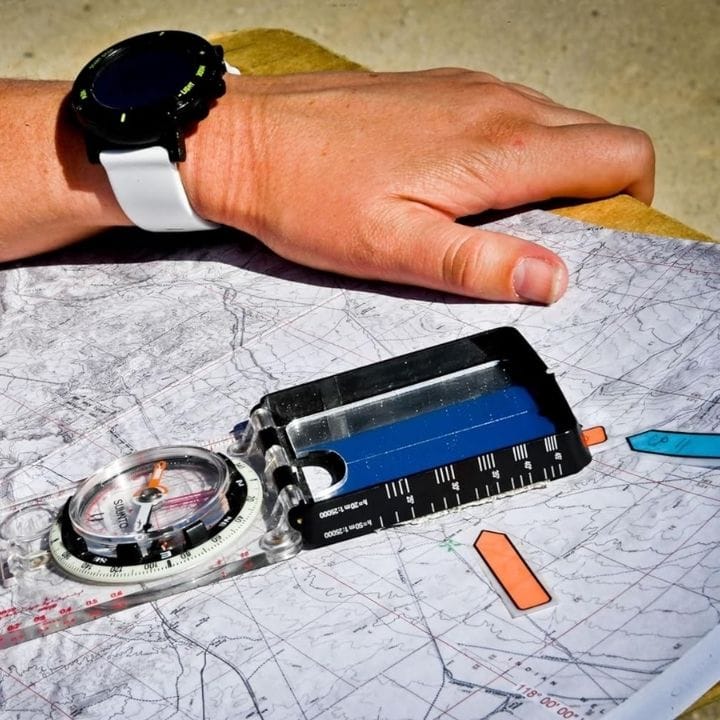
- Lay your map flat and decide on your destination point.
- Place the compass on the map with the edge of the baseplate connecting your current location to your destination.
- Rotate the bezel until the orienting lines in the compass housing align with the map's north-south grid lines, ensuring the orienting arrow points towards the top of the map (true north).
- The degree reading on the bezel at the index line is your map bearing.
Transferring the Bearing to the Field
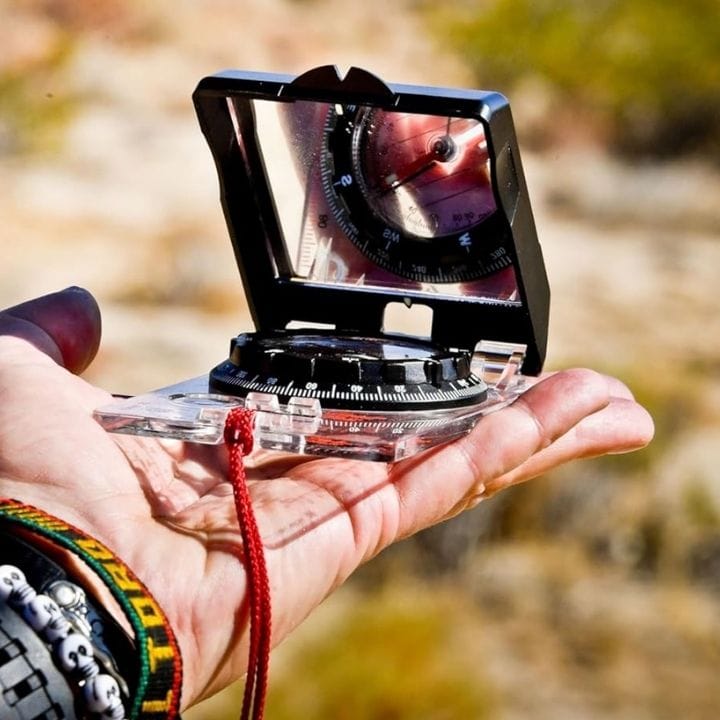
- Hold the compass level in front of you with the direction of travel arrow pointing straight ahead.
- Turn your body until the magnetic needle aligns with the orienting arrow on the compass housing. The direction of travel arrow now points to your destination in the field.
Taking a Bearing in the Field
- Identify a distant landmark in the direction you wish to travel.
- Hold the compass with the sighting mirror at a 45-degree angle, and sight the landmark in the mirror's notch.
- Rotate the bezel until the magnetic needle aligns with the orienting arrow.
- The bearing to your landmark is now indicated at the index line.
Following a Bearing
- With the bearing set, hold the compass level and turn until the magnetic needle aligns with the orienting arrow.
- Look up and identify a landmark that lies along the direction of travel arrow.
- Walk towards this landmark without looking at the compass. Once you reach it, take the compass out again and repeat the process to stay on course.
Triangulation for Pinpointing Your Location
- Take bearings from your compass to two known landmarks visible on your map.
- Draw lines on the map along these bearings from the landmarks.
- The point where the lines intersect is your approximate location.
Practicing Your Skills
Practice makes perfect. Use your compass in a familiar area to get comfortable with these steps before relying on it in unfamiliar territory.
Customer Review:
"As a beginner in orienteering, the SUUNTO MC-2 has been an incredible learning tool. The adjustable declination meant I could set it up for my local area, and the sighting mirror made taking accurate bearings a breeze. I practiced in my local park, taking bearings and following them, and it wasn't long before I felt confident in my abilities. The compass feels sturdy, and the luminous markings are great for when the light starts to fade. I can't wait to take it on more challenging trails!" - Emily T., Verified Amazon Customer
Beginner Steps to Master the Use of an Advanced Navigational Compass
With these beginner steps, you'll be well on your way to mastering the use of an advanced navigational compass like the Suunto MC-2 as well as some of the other best compasses available.
Remember, the key to proficiency with any tool is practice, so take your time to get to know your compass and use it often.
Happy navigating!
Your FavReviews Team!
P.S. - You may also like our article featuring the best compasses on Amazon.
FAQs Answered for the Budding Outdoor Enthusiast

Embarking on an outdoor adventure can be exhilarating, but it's crucial to master the art of navigation to ensure your journey is both safe and enjoyable.
For those new to the great outdoors, a compass is an indispensable tool that can guide you through the most remote landscapes. But how do you use one effectively? Fear not, intrepid explorer!
We've compiled a list of five burning questions every beginner outdoor enthusiast might have about navigating with a compass, complete with answers that will transform you from a novice to a confident pathfinder.
How does a compass work, and why is it reliable?
A compass is a simple yet ingenious device that works by utilizing the Earth's magnetic field. Inside its housing, a compass features a freely rotating magnetic needle that aligns itself with the magnetic north and south poles. Because the Earth's magnetic field is consistent and the magnetic poles are marked locations, a compass remains a reliable tool for orientation in the wilderness.
FAV Reviews Insights:
- A compass needle is magnetized to point toward the magnetic north, which is slightly different from the true geographic north pole.
- The compass housing typically includes degree markings for precise navigation and orienteering.
- Advanced compasses may have additional features like a declination adjustment, which accounts for the difference between magnetic north and true north.
Customer Review:
"I was always intimidated by the idea of using a compass, but after getting my hands on the Suunto MC-2G Global Compass, I realized it's not as complicated as I thought. The declination adjustment feature is a game-changer, and it's incredibly durable. I've taken it on several hikes now, and it's helped me navigate with confidence. Highly recommend for any beginner!" - Alex J., Outdoor Enthusiast
What is 'orienting the map' and how do you do it?
Orienting the map is the process of aligning your map with the actual terrain. This is done by laying your map flat and turning it until the features on the map align with their real-world counterparts. To do this accurately, you'll need to use your compass to find magnetic north and then rotate your map accordingly.
FAV Reviews Insights:
- Make sure your map is up to date and includes a 'magnetic north' arrow for reference.
- Use recognizable landmarks to confirm that your map is correctly oriented.
- Some compasses come with a baseplate and rotating bezel, which can be used to align the map with north more precisely.
Customer Review:
"I never realized how off I could be until I learned to orient my map with my Silva Ranger Compass. The clear baseplate and rotating bezel made it so easy to get my bearings right. Now, I can't imagine hitting the trail without doing it. It's like having a secret superpower!" - Megan K., New Hiker
How do you find your current location using a compass?
To find your current location with a compass, you'll need to learn the technique of triangulation. This involves taking bearings from your compass of at least two known landmarks and drawing lines on your map from these points. The intersection of these lines will indicate your location.
FAV Reviews Insights:
- Ensure you're standing at a spot where you can clearly see and identify at least two landmarks on your map.
- Your compass should have a sighting mirror or notch to help you take accurate bearings.
- Practice taking bearings in different terrains to become proficient at triangulation.
Customer Review:
"The Brunton TruArc 20 Compass made finding my location a breeze with its sighting mirror. I was able to take accurate bearings and pinpoint my position quickly. It's also super sturdy, which is great for someone like me who's tough on gear." - Carlos D., Aspiring Mountaineer
What is declination, and how does it affect compass navigation?
Declination is the angle difference between magnetic north and true north. It varies depending on where you are on the Earth's surface. Not accounting for declination can lead to significant navigational errors, so it's important to adjust your compass or your calculations based on the local declination value.
FAV Reviews Insights:
- Declination values can be found on most topographical maps or online for your specific location.
- Many modern compasses have a declination scale that allows you to set the local declination, ensuring accurate navigation.
- Remember that declination changes over time and with movement across the Earth's surface, so it's essential to update your information regularly.
Customer Review:
"I had no idea what declination was until I got the Cammenga 3H Tritium Military Compass. It's the same model used by the U.S. military, and it's incredibly robust. The declination adjustment is straightforward, and it's made a huge difference in my navigation accuracy. It's a must-have for any outdoor kit." - Sarah T., Adventure Seeker
How do you use a compass to follow a set course?
You'll need to determine the bearing from your map, or hold the compass with the sighting mirror at a 45-degree angle and sight the landmark in the mirror's notch. Then use your compass to maintain that direction in the field. This involves aligning the compass needle with your intended bearing and then choosing landmarks along that line to walk toward, keeping you on course.
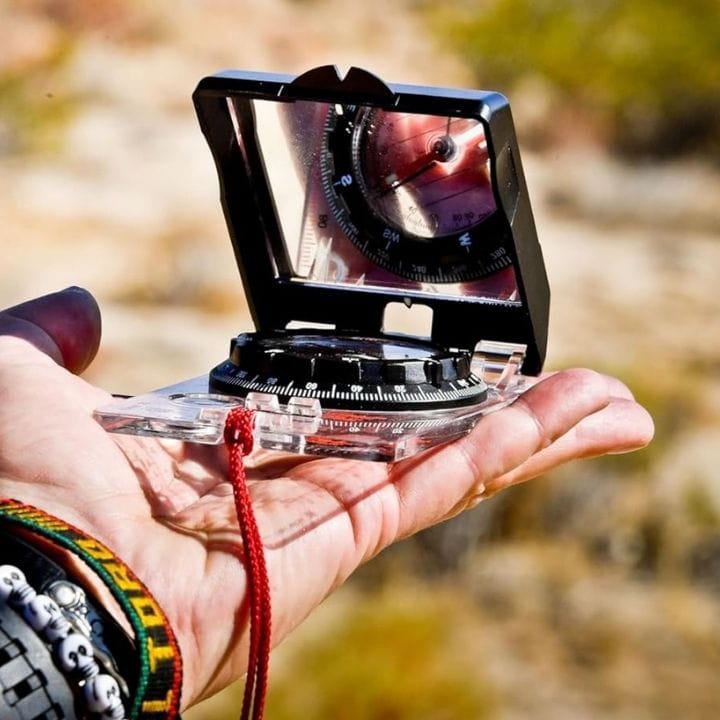
FAV Reviews Insights:
- A compass with a rotating bezel is essential for setting and following precise bearings.
- Keep the compass level and steady as you walk to maintain accuracy.
- Periodically check your bearing, especially after navigating around obstacles or changing terrain.
Customer Review:
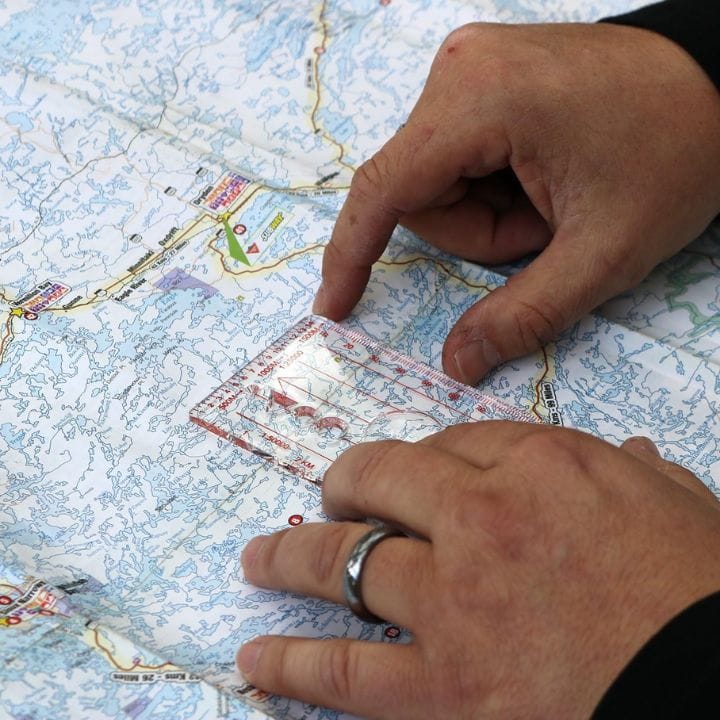
"When I decided to tackle a backcountry trek, I knew I needed a reliable compass. The Coghlan's Sight-Grid Signal Compass was affordable and surprisingly accurate. Setting my course was easy, and it helped me stay on track even in dense forest. It's lightweight and compact, perfect for my long-distance hikes." - Jake P., Trail Enthusiast
Deborah Clarke, a lifelong resident of Lake Huron's shores, founded FAV Reviews in 2022. Her goal is to enhance the lakeside experience for families by recommending quality products they may not have found on their own. As an avid nature lover, Deborah understands the importance of selecting the right products for outdoor activities. FAV Reviews aims to be your go-to source for everything from family-friendly picnic gear to sustainable living essentials.
Whether you're into boating, hiking, or simply enjoying a picnic by the lake, FAV Reviews covers a wide range of products including paddleboards, kayaks, fishing gear, hiking boots, camping tents, swimwear, sun hats, and more. The site also features outdoor furniture, solar-powered lights, and fire pits to enhance your lakeside home. Committed to environmental conservation, FAV Reviews offers eco-friendly recommendations for lakeside living for everything from reusable water bottles to sunscreen.
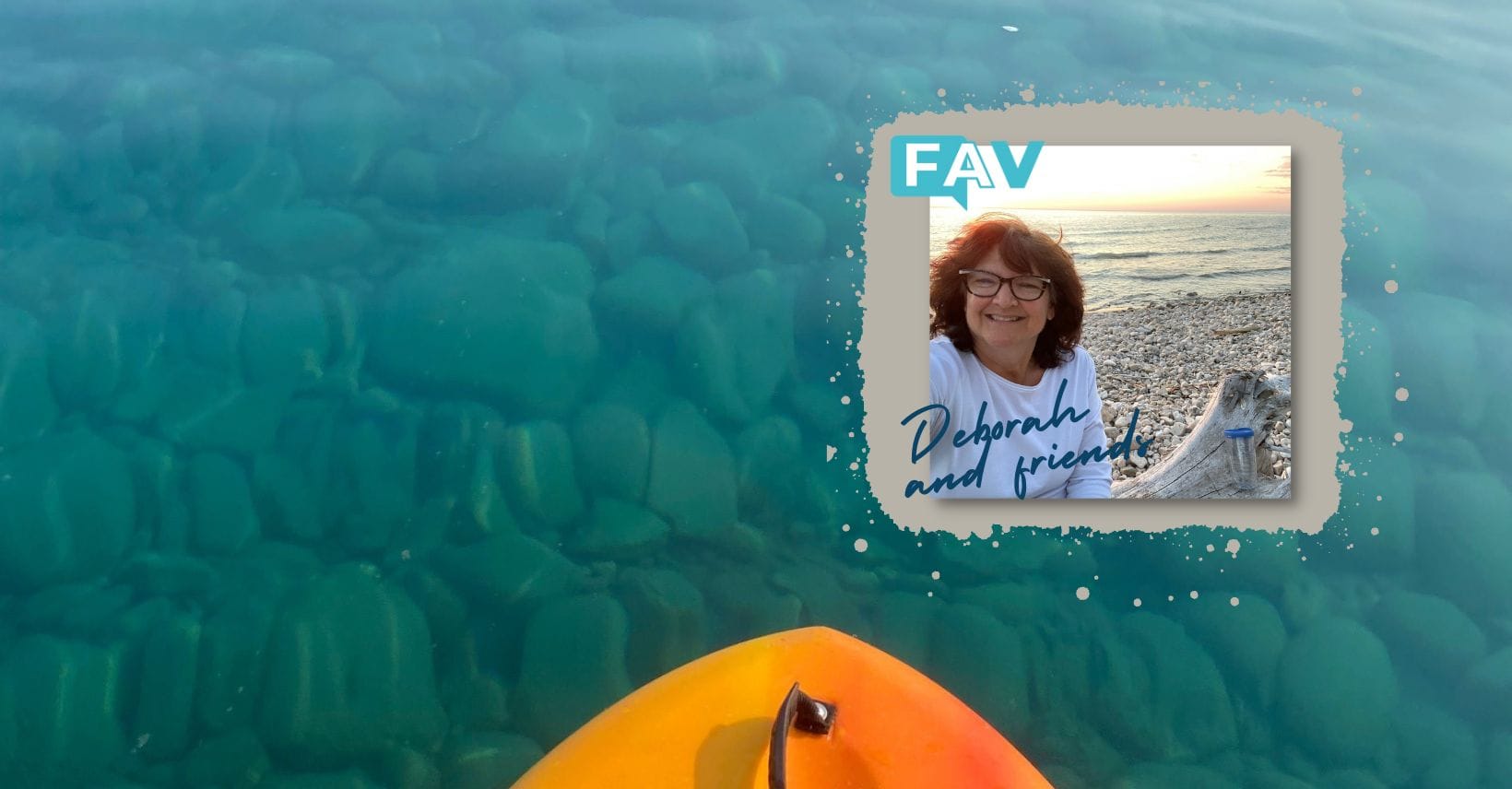
Stay updated with the latest reviews by subscribing to our emails. Click the subscribe button on this page to ensure you never miss out on enhancing your lakeside living experience.
Why Trust Us?
We hope you find your next favorite thing from FavReviews! We are a family friendly product review site.
Four Generation Family: As a four generation family, the breadth of products we consume and review as brand ambassadors is vast. But we can tell you, in general, in we love the outdoors, sports, staying active, living healthy and celebrating the changing seasons.
Trending Products: We also love finding new trending products and we are happy to pass along our research of new trending products to you. Follow us so you don't miss out on a thing! We send out cool emails with our latest reviews, and we will never sell or misuse your information.
Opinions Based on Use, Research and Reviews: Each product we write about is independently selected by our editors. All opinions in this article are our own, based on our own use of the product(s), or hours of research and reading reviews. We will never recommend something we wouldn't use ourselves in our own family.
Compensation: Yes, FavReviews may collect a share of sales or other compensation from the links on this page if you decide to buy something (that's how we stay in business). But, the product never costs you more, in fact in some cases, we hope we might help save you money based on our recommendations.
Reviews have been edited for length and clarity. Enjoy finding your next favorite thing!
Happy Shopping!
Your FavReviews Team
____________________________________________________
BEHIND the SCENES LOOK: If you’d like to learn how to start your own product review blog, with products that you love, check out our article How to Become a Brand Ambassador or visit LearnWriteLive.com There is room for all of us to provide better service to online shoppers. What's your passion?

